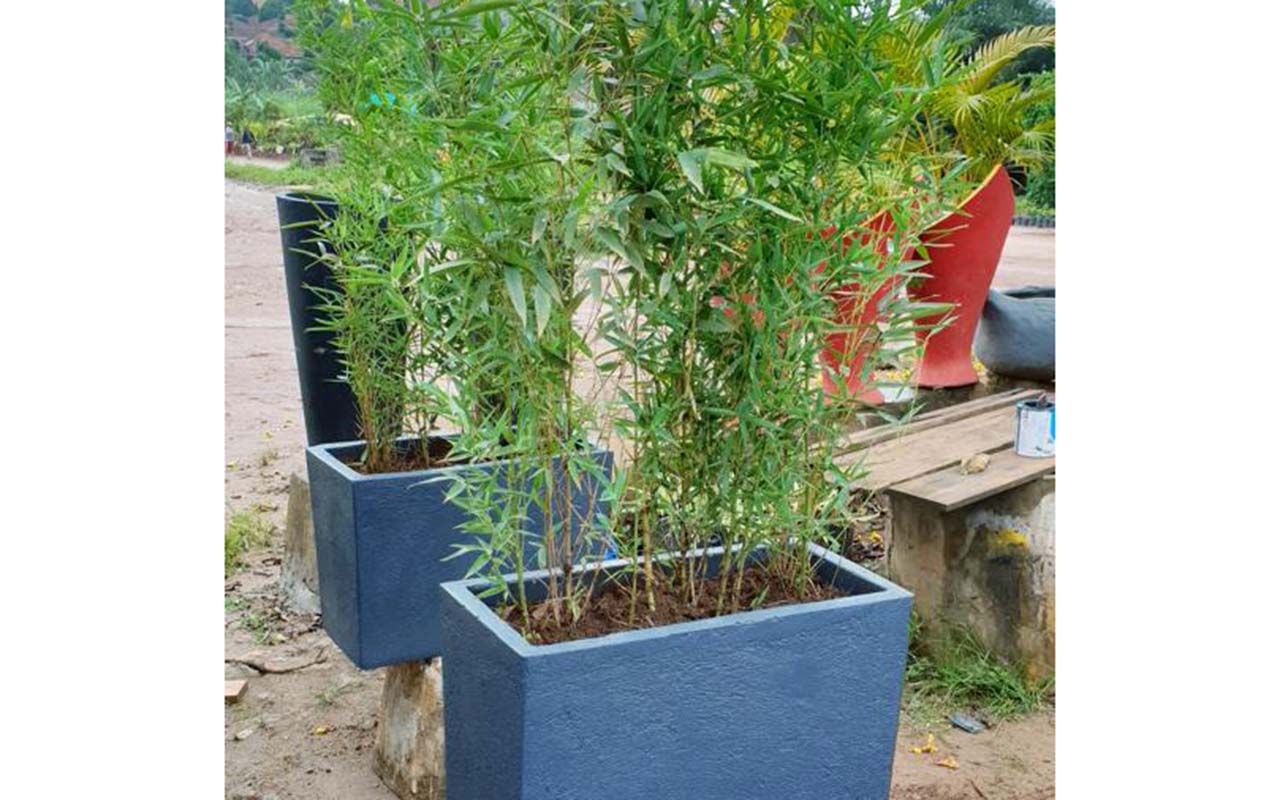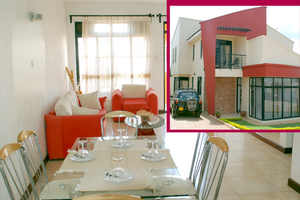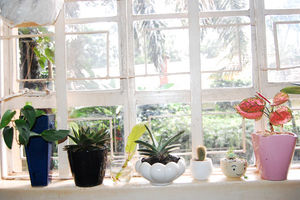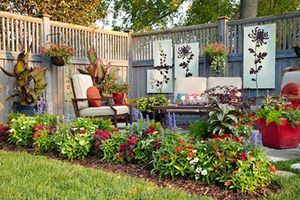
Choosing the right type ensures it fits your garden’s size and layout needs. Photo/Beatrice Nakibuuka.
Having bamboo in your home can bring numerous benefits, from air purification to aesthetic appeal. It can also help regulate humidity levels in your home, has natural pest-repelling properties, keeping unwanted insects away and the presence of bamboo can have a calming effect, promoting relaxation and reducing stress. While bamboo can be a beautiful and low-maintenance addition to any garden, Ethel Nambowa a gardener at Green Gardens warns that it can also be an invasive nuisance if not properly controlled.
“With its rapid growth and ability to spread quickly, bamboo can cause significant damage to properties and gardens since it can grow through barriers like tarmac and pavers. However, with the right knowledge and techniques, you can enjoy the benefits of bamboo while preventing its invasive spread.”
Types of bamboo
The While you might assume that bamboo is all the same, Nambowa remarks that bamboo varieties are categorised into two as; clumping and running varieties.
Clump-forming bamboos, such as the hardy Fargesia and borinda species, exhibit a slow spread of only a few inches per year, making them easily manageable. They are known for their compact growth typically growing up to three inches per year and reach heights of 10-20 ft. They are usually ornamental and require no more maintenance than other perennials in a border garden that thrive with minimal care. You can stop the spread of this variety of bamboo by simply cutting the clump.
The running bamboo varieties are known for their aggressive growth and ability to spread quickly; they can grow up to three feet tall and can spread up to 20ft or more in a single season.
Some examples include golden bamboo, black bamboo, moso and bambusa. They are good privacy screens, border control, wind breaks and control soil erosion. She recommends regular pruning of your bamboo; before new growths begin and as soon as you notice any shoots that are too long or wild. Do not go for extended periods without pruning it. It will encourage invasive growth.
But if you have running bamboo, pruning it alone will not be enough to stop it from spreading. Instead, you will need to take drastic action to prevent it from damaging your home. Nambowa therefore advises that you choose clumping bamboo varieties, which spread less aggressively than running varieties.
Bamboo is one of those many invasive plants that exist but there are ways to grow bamboo safely, and Bruno Sserunkuuma, a landscaper at Cheshan Inspired Tropical Landscapes, advises that planting in containers is the safest option. If you are thinking of planting a bamboo garden for your landscape, it is best to avoid planting it directly into the ground. Instead, use sturdy containers lined with thick bamboo-proof membranes, raised off the ground.
He says, “Plant the bamboo in a container that is large enough to support its growth. The container should have good drainage as bamboo requires well-drained soil to thrive, a thick bamboo membrane and at least two feet deep and raised off the ground to contain its growth.”
This prevents the roots from spreading; allowing you to contain the rhizome roots and stopping it from overtaking your garden plants and potentially invading your home. Also, remember to plant bamboo some safe distance away from other plants to prevent overgrowth and potential damage.
Install bamboo barriers
Install bamboo barriers to contain roots and prevent spreading. You can make your bamboo root barrier by planting bamboo in a bottomless container sunk into the ground.
This can be a cost-effective solution to contain roots and prevent spreading. Bamboo barriers are a much cheaper option that will save you from digging up your patio because the roots will not compromise the structure or integrity of your home.
He says, “If the bamboo in your garden has not yet spread, but you have concern that it will, you can guard against it by installing a strong bamboo-proof root barrier sunk 2ft into the ground to contain it.”
You can create smaller clumps of running bamboo by planting them into a spare plastic tub, large plastic barrel, old water butt or larger water tank, with the bottom cut out. This is then sunk into the ground with a few inches still protruding out. Fill it with a mix of soil and compost, and then bamboo planted into it. Install a physical barrier, like a plastic or metal rhizome barrier, around the bamboo plant to prevent roots from spreading. Planting bamboo along boundaries, like fences or walls, can contain its spread.
Plant away from buildings
Bamboo, especially the running variety does not usually stay in its lane. It will try to spread out far and wide causing damage especially if planted next to buildings. This is why Nambowa advises that homeowners plant the bamboo as far away from the buildings as possible.
She says, “The reason why bamboo is commonly planted in borders and along boundary fences is because it can push through drains, patios, pacers, tarmac, cavity walls, brickwork, and even cracks.”
It is important to note that it is not advisable to grow any woody long-lived plants like trees, shrubs, or bamboo near any buildings or other hard landscaping, like paths, where their root growth can cause damage as the plants grow larger over time. To avoid damage to buildings and outdoor structures, she recommends planting bamboo at least 6m away from structures.
Remove bamboo completely
If you already have bamboo in your garden and want to move it to a safer distance away from your home, it is possible to move bamboo. If you have the clump forming type, simply removing the clump moves it completely. The invasive variety may take over your garden and even using weed-killing herbicides may not be effective.
Sserunkuuma says its removal may involve excavating and removing the entire root ball and rhizome system, which can be a costly and labor-intensive process.
Regularly remove new shoots, prune roots and rhizomes annually to control spread, and mulch around the base to suppress new shoots.
Nambowa recommends combining bamboo with other plants for a unique landscape feature but consult a gardening professional if you are unsure about controlling bamboo spread in your front yard.




